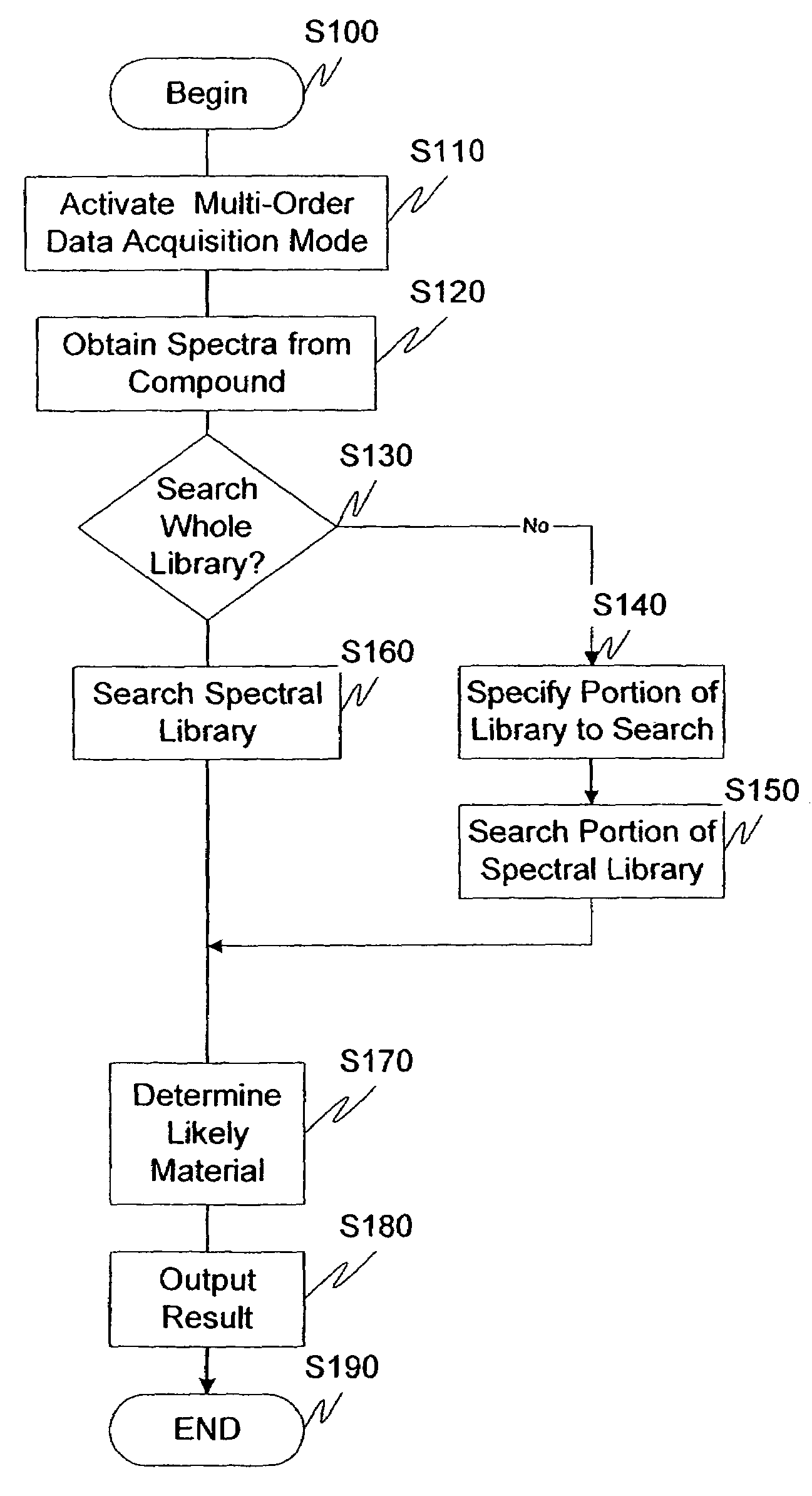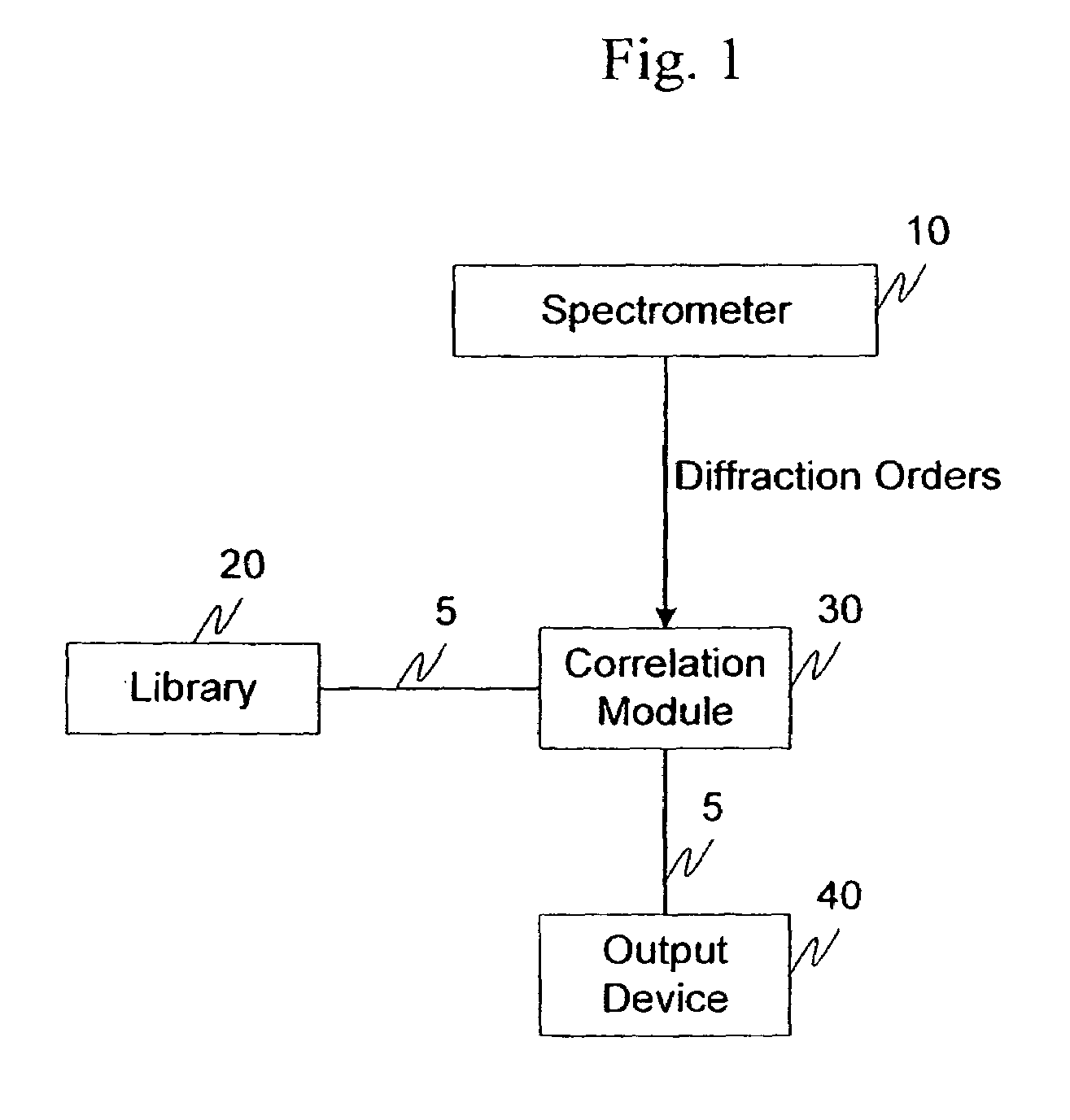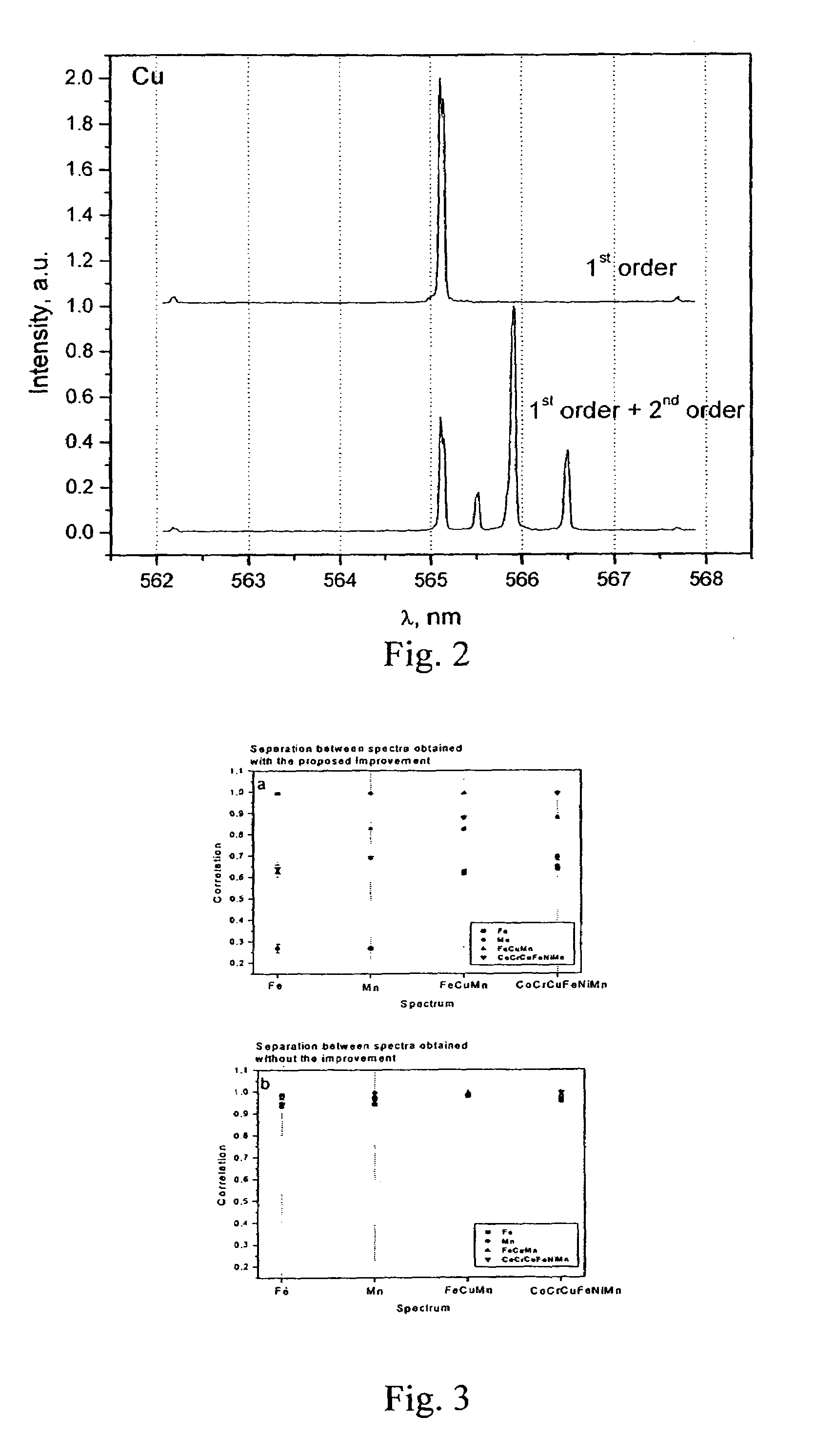Material identification employing a grating spectrometer
a grating spectrometer and material technology, applied in the direction of spectrometry/spectrophotometry/monochromators, instruments, optical radiation measurement, etc., can solve the problem of difficult deciphering of the spectrum, the frequency of filter change and the use of band pass filters, and the low efficiency of the diffraction grating near the end of the rang
- Summary
- Abstract
- Description
- Claims
- Application Information
AI Technical Summary
Benefits of technology
Problems solved by technology
Method used
Image
Examples
Embodiment Construction
[0027]The exemplary systems and methods of this invention will be described in relation to a spectroscopy system and methodology. However, to avoid unnecessarily obscuring the present invention, the following description omits well-known structures and devices that may be shown in block diagram form or otherwise summarized. For the purpose of explanation, numerous specific details are set forth in order to provide a thorough understanding of the present invention. It should be appreciated, however, that the present invention may be practiced in a variety of ways beyond the specific details set forth herein. For example, any type of spectroscopic technique and equipment can be used to obtain the spectral data as discussed herein.
[0028]Furthermore, while the exemplary embodiments illustrated herein show the various components of the spectroscopy system collocated, it is to be appreciated that the various components of the system can be located at distant portions of a distributed netw...
PUM
| Property | Measurement | Unit |
|---|---|---|
| wavelength | aaaaa | aaaaa |
| wavelength | aaaaa | aaaaa |
| wavelength | aaaaa | aaaaa |
Abstract
Description
Claims
Application Information
 Login to View More
Login to View More - R&D
- Intellectual Property
- Life Sciences
- Materials
- Tech Scout
- Unparalleled Data Quality
- Higher Quality Content
- 60% Fewer Hallucinations
Browse by: Latest US Patents, China's latest patents, Technical Efficacy Thesaurus, Application Domain, Technology Topic, Popular Technical Reports.
© 2025 PatSnap. All rights reserved.Legal|Privacy policy|Modern Slavery Act Transparency Statement|Sitemap|About US| Contact US: help@patsnap.com



